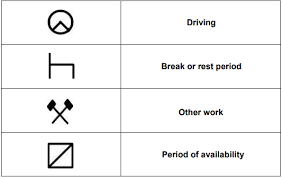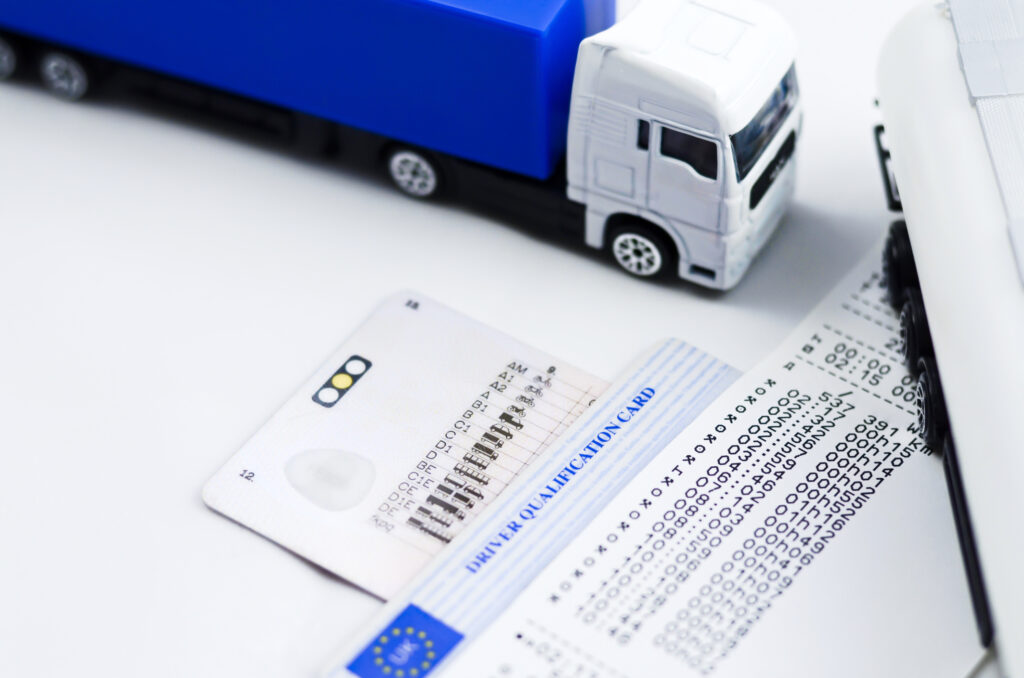The practice of logging professional driving activities dates back to the 1950s.
Analogue tachographs were increasingly used over the next few decades and became compulsory within Europe in 1986, although the EU had laid down social legislation in the area of road transport since 1969.
Digital models of tachographs were introduced in 2006 and today are used by more than 1 million transport companies and over 6 million professional drivers.
A 2006 study carried out by the IRU (the world transport road organisation) found that truck driver fatigue caused 6% of accidents, 37% of which were fatal whilst a 1995 American research study by the National Transportation Safety Board suggested that driver fatigue was in fact underrepresented and could be a factor in 30-40% of all heavy truck accidents.
The introduction of Smart Tachograph represents the industry’s commitment to protecting public and road safety and managing compliance with industry legislation. The devices record professional drivers’ activities, such as driving hours, rest breaks and any other duties that a driver may undertake within a shift.
The introduction of the Smart Tachograph
What does this mean?
Since June 2019, legislation has dictated that all newly registered vehicles must be fitted with a Smart Tachograph. Smart tachographs are designed to:
- reduce tachograph fraud
- improve efficiency
- reduce the admin burden on fleets
Two main benefits of installing a smart tachograph are that they allow remote communication with roadside inspection officers and they automatically record the location of the vehicle at the start and end of a journey, with regular updates made every 3 hours of driving time.
Since March 2025, the UK/Northern Ireland and Republic of Ireland governments have enforced the retrofitting of second generation (Gen II) smart tachographs on all load bearing HGVs that had been using first generation (Gen I) smart tachographs and make EU cross-border journeys.
UK hauliers making international deliveries to the EU including the Republic of Ireland have been required to retrofit Gen II smart tachographs since 31 December 2024. However there have been no changes as yet to tachograph requirements for UK domestic hauliers. This ruling has been mandated by the EU Commission’s Road Transport Committee.
Second generation smart tachographs have enhanced functionalities including automatic border recognition, real-time display of a vehicles current country and expanded Dedicated Short Range Communication (DSRC) data, including maximum driving time, enabling remote monitoring by enforcement authorities.
What does this mean for operators and drivers?
In reality the introduction of smart tachographs means very little change for drivers – tachograph smartcards are used as before with digital tachographs. Drivers insert their own smartcard in to the tachograph when on duty and it will record their activities.
However, operators will notice a number of benefits. The smart tachograph will enable much more information to be harvested about fleet management which will help to inform operations within the business.

Most significant is the impact that smart tachographs have on how enforcement authorities can access and interrogate the data they hold remotely from the roadside. The data that they can access is limited and doesn’t include personal driver details or their hours recorded and can’t be used as evidence of offences such as speeding.
Sensor changes
A key part of smart tachograph systems is the use of GNSS (Global Navigation Satellite System – there’s a short video explaining it here). Devices are set up so that the head unit will automatically record location data at the start and end of a working day and after every 3 hours of driving. A driver must manually log the start and finish countries.
In order to prevent manipulation of data recorded by a smart tachograph, data from the vehicle speed sensor is compared to that from the GNSS. If there is a difference that is outside a set tolerance window, it will trigger the recording of a motion conflict.
This data is accessible via download from the head unit by enforcement authorities and can only be done from the roadside. As mentioned before, no personal data can be downloaded, and data cannot be used as evidence for speeding offences.
Smart Tachos – Points to consider
If a vehicle was built before June 2019 but was not registered until after that date, the smart tachograph may need to be replaced with the latest model. Fitting smart tachographs to vehicles that have not had a unit installed previously may also present issues.
Damaged first-generation smart tachographs may be replaced with a like for like unit. However, if a vehicle was registered after 2006 it must be fitted with a smart head unit.
Smart tachographs will need to be replaced every 15 years – the unit will actually stop working when the security certification expires. Developments in this sector mean that it is likely that a newer model will become available within that time frame.
All operators should make sure that they still comply with GDPR regulations following the introduction of smart tachographs. The data that is collected and stored is so much more detailed, and this has important implications for GDPR compliance.
MHF is not able to carry out installations of smart tachographs. This is a highly specialised service which must only be done by an Approved Tachograph Centre. If you need to have a tachograph fitted, calibrated or inspected, enter your postcode in this handy search facility at GOV.UK to find your local centre.
Digital Tachograph Smartcards
There are four types of digital tachograph smartcards:
- Driver card – carried by a driver and inserted in to a digital tachograph when the driver is on duty.
- Company card – used by the company for authorising vehicle downloads etc.
- Workshop card – available only to approved calibration centres.
- Control card – available only to VOSA and the Police for carrying out enforcement duties.
Driver cards are valid for 5 years and are available to apply for online at the DVLA.
Company cards are also valid for 5 years but can be applied for and renewed online at www.gov.uk/apply-company-tachograph-card
Workshop and Control cards are only available to approved calibration centres and the enforcing bodies mentioned above so we have not included further information about them in this article.
Contact us
MHF (UK) Ltd has a wide range of vehicles available for sale or for hire that are fitted with modern smart tachographs. If you are looking to upgrade your vehicle or expand your fleet, contact us to discuss your requirements and see what we currently have in stock.
Looking to hire or buy your next HGV?
Frequently Asked Questions
What is a smart tachograph?
Smart tachographs are digital devices that record driver’s activities during a shift. They were introduced to reduce tachograph fraud, improve efficiency and reduce the admin burden on fleets.
Do I need to upgrade to a second generation smart tachograph.
If you operate a UK domestic haulage business you do not yet need to upgrade your Gen I smart tachograph to a Gen II version. International hauliers needed to upgrade to a second generation smart tachograph by March 2025.
Where can I get a second generation smart tachograph retrofitted to my HGV?
If you need to have a tachograph fitted, calibrated or inspected, visit GOV.UK to find your local centre.




